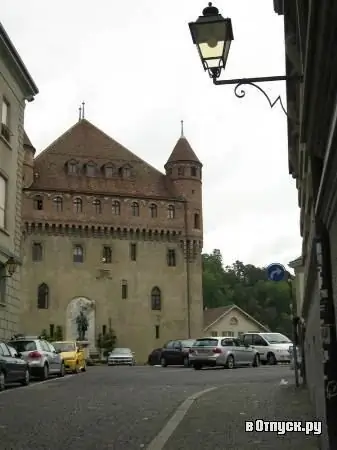
Description of the attraction
The Château Saint-Mer was built in 1397-1425 on the Cité hill in the center of Lausanne on the site of the old monastery of Saint Marius, which was moved to another place. The construction of a powerful fortress began at the initiative of Bishop Guillaume de Menton. The construction of the future episcopal residence was completed under the next bishop, Guillaume Challot.
The castle is named after Marius d'Avanches, bishop of the late 6th century, who is also called Saint-Mer, or Saint Mary. Bishop Marius transferred the bishopric from Avanches to Lausanne. In the documents of the 10th century, one can read that in 581 the pressure of the Germanic tribes from the north increased, so the highest church hierarchs did not feel safe and were forced to move to a building on the Cité hill in Lausanne.
The castle of Saint-Mer, intended for defense and housing, was built, like many other castles of the era, such as Voufflens-le-Château or Blonnay, in the shape of a large cube. The fortress with an area of 25X23 m from the southern side towered 25 meters. The walls were 2, 8 meters thick. The upper part of the castle was built of bricks. This indicates that the builders of the castle were invited from Lombardy. With its appearance, the powerful fortress Saint-Mer reminds of the palaces of the French royal domain (Louvre, Vincennes). Initially, this structure was separated from the rest of the city by one or more fences and a dry moat in the west.
In 1536, Lausanne became another prey for the army of Bern, the castle of Saint-Mar was turned into an administrative building and an arms depot. In 1803, the cantonal government settled here. The fortress was hastily put in order: the tower that interfered with the construction of new streets was demolished, the entrance gates were removed, the garden adjacent to the castle was razed to the ground. The castle acquired its current appearance. It still houses the offices of the government of the canton of Vaud.






